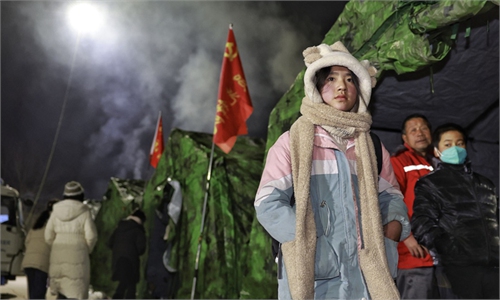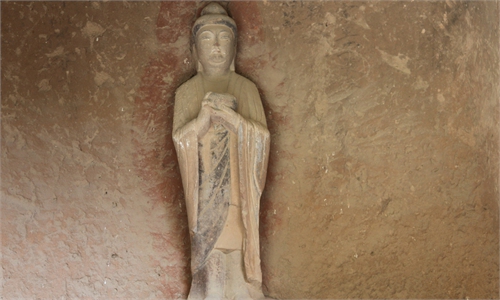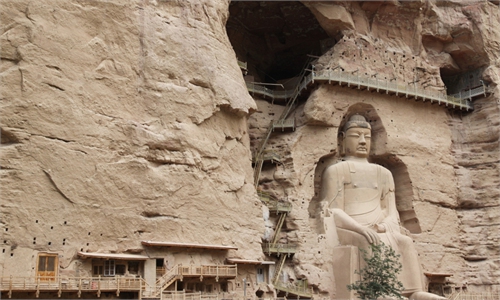Earthquake death toll reaches 134
Experts warn of secondary disasters as village in Qinghai hit by sand boils
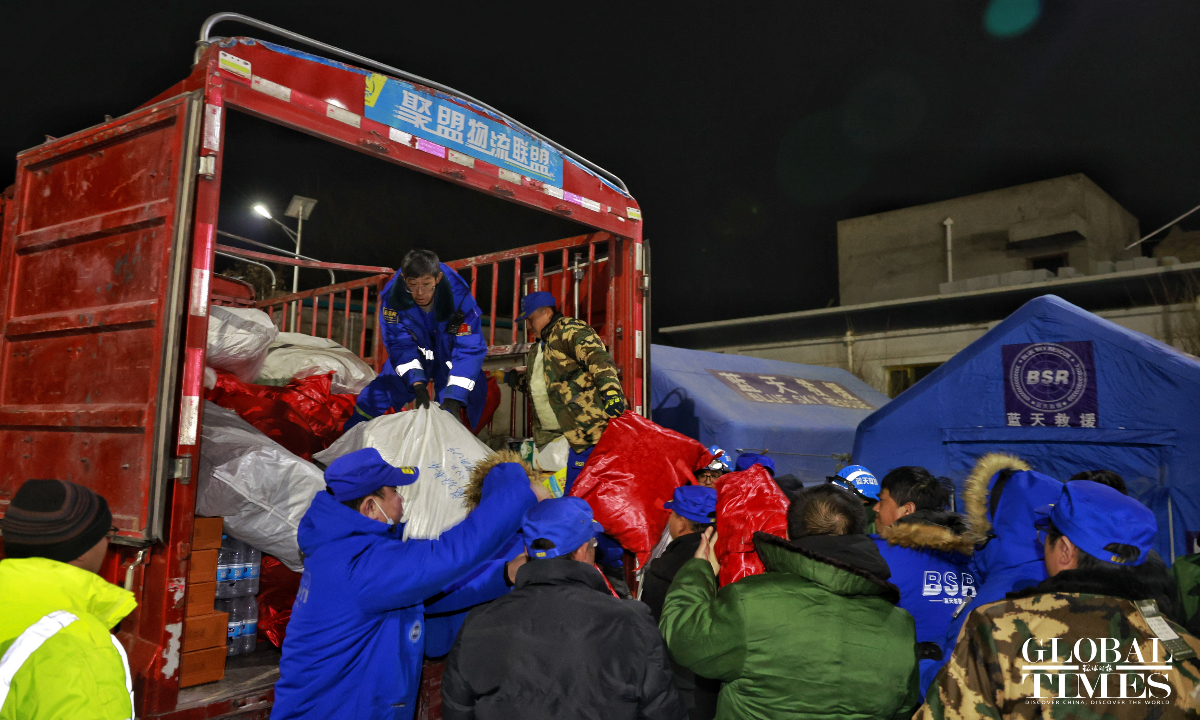
Photo: Li Hao/GT
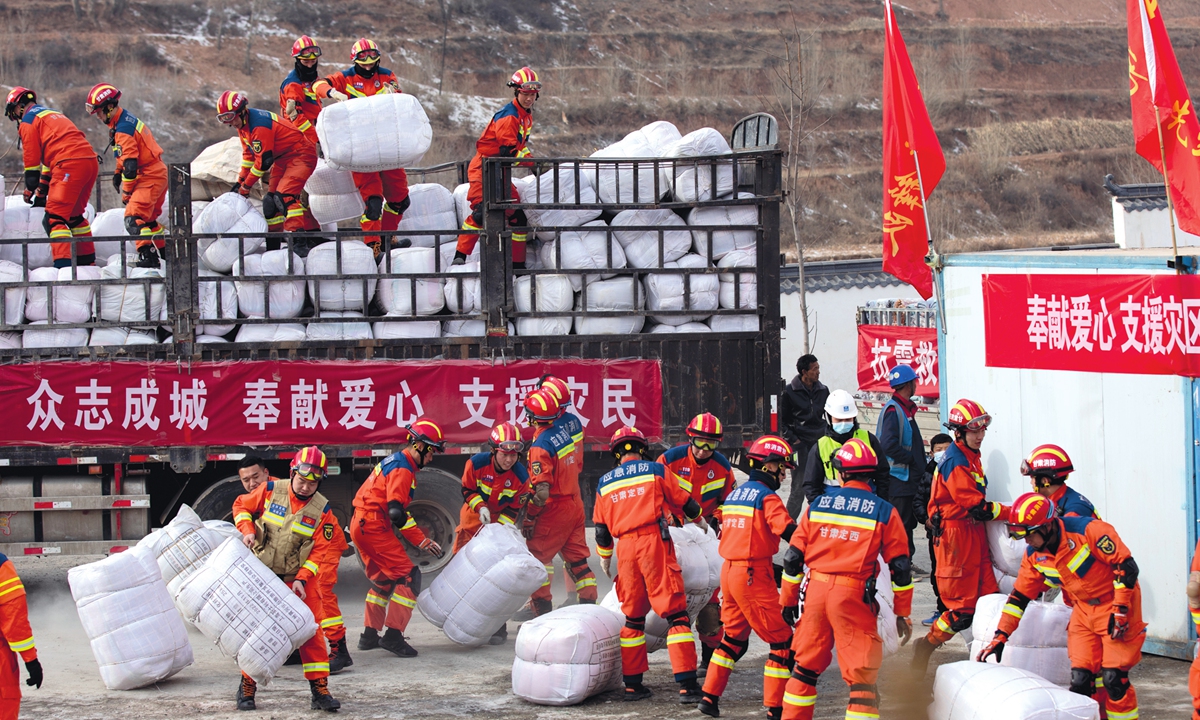
Firefighters carry earthquake relief supplies in Jishishan county, Northwest China's Gansu Province, on December 20, 2023. Photo: VCG
The death toll caused by the devastating earthquake that rattled Northwest China Monday night reached 134 as of Wednesday press time - 113 in Gansu Province and 21 in Qinghai Province. Rescue work is drawing to an end, and the focus will now turn to the treatment of the injured and the resettlement of those affected, Gansu authorities said at a press conference on Wednesday.
At present, more than 87,000 people have been temporarily evacuated and resettled in safe places, Gansu officials said at the press conference, revealing that 14,939 houses collapsed and 207,204 more were damaged during the quake, affecting 145,736 people.
A total of 78 trapped individuals have been rescued, with 6,653 people evacuated as of 6:00 am on Wednesday. Additionally, 360 tents have been set up, 683 hazardous areas have been cleared, and 47 tons of supplies have arrived at the disaster-stricken sites.
Several shelters were erected overnight in both Gansu and Qinghai. When the Global Times reporters visited shelters in Dahe village of Gansu Province and Jintian village of Qinghai Province, earthquake victims were living in tents newly set up.
"Every tent is equipped with electricity and stoves to keep us warm. We have food and material pouring in from all over the country. We don't need anything now," 54-year-old Li, who lives in Jintian village, told the Global Times on Wednesday.
Vegetables, meat, bread and hot soup were served as lunch on Wednesday in the Jintian village shelter. When the food was ready, people in the tents waited patiently. "We let the PLA soldiers eat first. They helped us a lot," said Li.
Li Kai, an officer from the PLA's Western Theater Command, told the Global Times on Tuesday night that he helped transfer the victims and move their belongings, such as furniture and livestock. "Some of those people are not rich so we are doing what we can to reduce their losses."
After 10 hours of nonstop efforts, all damaged roads and highways leading to the disaster area, especially near the epicenter, were cleared and reopened, including all 24 severely damaged rural roads, so that relief and supply vehicles were able to access impacted communities, the Gansu transport bureau said at the press conference.
All routes within the Lanzhou Railway Bureau, which had been delayed significantly due to the impact of the earthquake, also resumed normal operations on Wednesday morning.
Damage to the main power grid in earthquake-stricken areas of Gansu and Qinghai had been fully repaired as of Tuesday evening, according to the State Grid Gansu Electric Power Company.
A total of 423 aftershocks have been recorded as of 8 am Wednesday, including 10 aftershocks measuring 3.0 magnitude or higher.
The China Geological Survey organized 33 experts to rush to the disaster-stricken areas in Gansu and Qinghai provinces on Wednesday. The working groups will cooperate with the emergency management departments and local governments to carry out on-site geological disaster investigation and surveys, aerial drone surveys, monitoring and early warning tasks, risk assessment and emergency disposal of hazardous material.
They will also conduct seismic analysis and research on the earthquake and submit materials for disaster relief use.
The strong earthquake triggered various secondary disasters. In Minhe county, Qinghai, which borders the epicenter in Jishishan county, two villages experienced sand boils shortly after the earthquake. A significant number of houses were buried and washed away by mudslides, resulting in 16 individuals going missing. Following the incident, the Qinghai Provincial Fire Rescue Team swiftly organized overnight rescue operations.
The houses of 36 families, totaling 177 villagers, were destroyed by sand boils in Jintian village, and 13 individuals are still missing, including a pregnant woman. A firefighter on-site told the Global Times that after overnight search and rescue efforts, as of Wednesday morning, four bodies had been discovered.
When asked why usually dry areas such as Jintian village, which is also far away from rivers and has seen no rainfall, suffered such a severe landslide, Wang Tun, head of a key earthquake early warning laboratory in China's Sichuan Province, told the Global Times that after a strong earthquake, due to the shaking of the Earth's crust, water-saturated sand and soil deep underground undergo a phenomenon called liquefaction. This liquefied sand layer is then forced through certain channels and reaches the surface directly.
A rescue worker at the scene told the Global Times that rescue work in Jintian village has been difficult as the mud makes it impossible for workers to walk, and a floating bridge made of wooden planks must be used to enter the location. Moreover, when excavating the soil, the mud flows like liquid. "Whenever you remove a spoonful of it, it immediately fills up again. There is simply no way to carry out rescue efforts."
The rescue worker said he and his teammate pulled an all-nighter on Tuesday night. "We switched shifts every two hours because the night was freezing at sub-zero temperatures."


